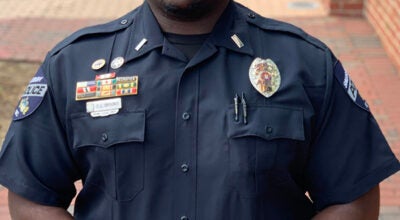Council candidates debate downtown school office
Published 12:00 am Wednesday, October 30, 2013
SALISBURY — The proposed downtown school central office stirred the most emotion during Tuesday night’s forum at Catawba College for Salisbury City Council candidates.
A large crowd turned out for the event, sponsored by the Salisbury Post and Rowan County Chamber of Commerce. Dr. Michael Bitzer, acting provost and chairman of the Department of History and Politics at Catawba, served as moderator. Questions were submitted by from readers of the Salisbury Post, and all candidates attended except challenger Dale Stephens.
Nearly 25 years after the city and Rowan County school systems merged, school administrators still do not have a central office. All candidates but challenger William Peoples said the merger, which was mandated by the state, was not a mistake, and everyone agreed the city should not operate its own school system today.
How the city can work with Rowan County commissioners to see the project finally completed, however, drew a variety of opinions.
The city has offered to donate land and build a parking lot for the central office, and a Salisbury family has offered to finance the $7.3 million building. A majority of Rowan County commissioners, who would have to sign off on a lease-purchase agreement for the school board, oppose the location at 329 S. Main St., saying they are not convinced that environmental contamination from a former service station has been adequately resolved.
Councilman Brian Miller said commissioners are using the contamination as an excuse to say no. The state has given the site a green light for development.
Commissioners are actually opposed to building the central office downtown, as well as the cost of the project, Miller said. Commissioners have repeatedly approved spending up to $6 million for the building.
Miller said he regrets not forging a better relationship with commissioners during his two terms on City Council, but “when their goal is to undermine the public education system of this community, I will have a hard time agreeing with them.”
Miller said Salisbury contributes disproportionately more to the school system than other areas of the county because of the size of the city’s tax base. “We are contributing more but getting less.”
Challenger Blake Jarman came to the county’s defense, saying City Council members should treat commissioners professionally and with respect.
“You don’t have to accuse county commissioners of doing things wrongly, because all of the City Council members have made bad decisions before,” Jarman said. “We do need to work together to accomplish what we need to happen in this community.”
Jarman called the city-county standoff “a mess” and said he would help resolve the issue with better communication.
Challenger Rick Honeycutt had a different solution, one that drew a few chuckles from the crowd. Put the school board, county commission and City Council in one room and lock the door, Honeycutt suggested.
“Throw a few sandwiches in there, and you guys can’t come out until you decide where we’re going to put this building,” he said.
Honeycutt said the city spent $1.3 million preparing 329 S. Main St., which he called a mistake because the city had no guarantee the central office would go there.
Mayor Pro Tem Maggie Blackwell and Councilwoman Karen Alexander strongly disagreed.
Alexander, who has used the $1.3 million figure before, said the number includes about $750,000 spent by the school board on architect fees and building design and engineering.
When the school board and City Council moved forward on 329 S. Main, they had a “mandate” from a previous Board of Commissioners that had agreed to fund the building, Alexander said. After the 2012 election, the make-up of the county board changed, and a majority of commissioners pulled their support for the downtown location.
“That’s who wasted your money, not the City Council,” Alexander said.
The city paid $55,871 — about $35,000 more than expected — for the $497,000 cleanup. The state paid the balance.
Blackwell said the cleanup made the property viable for economic development, whether for the central office or some other project. She said the school board, City Council and county commission are three autonomous boards, “and no one has more power than the other.”
William “Pete” Kennedy, the longest-serving councilman and a former educator, was the president of the Salisbury PTA when the two school systems merged. He said the merger has been a success and once again extended an olive branch to Rowan County commissioners “to work with them on any level and move any initiative forward.”
Mayor Paul Woodson said with donated land, parking and water-sewer service, the city is offering to contribute about $1 million toward the central office, which he said would help recruit teachers to the school system. Woodson said the city wants to work with county commissioners but isn’t having much luck.
Challenger William Peoples encouraged voters to “fire” county commissioners who have blocked the downtown central office.
“We need to hold elected officials accountable,” he said.
The feud between the city and county does not attract jobs, help the community or educate children, Peoples said.
“Somebody needs to have some common sense and say we need to build that central office,” he said. “The world is looking at Salisbury and Rowan County and how we do business.”
State law gives the Rowan-Salisbury Board of Education authority to choose a site for its central office. School board members voted again Monday to consider building the central office at 329 S. Main, as well as two other possible locations — a site at Summit Corporate Center and the former Department of Social Services.
Contact reporter Emily Ford at 704-797-4264.





